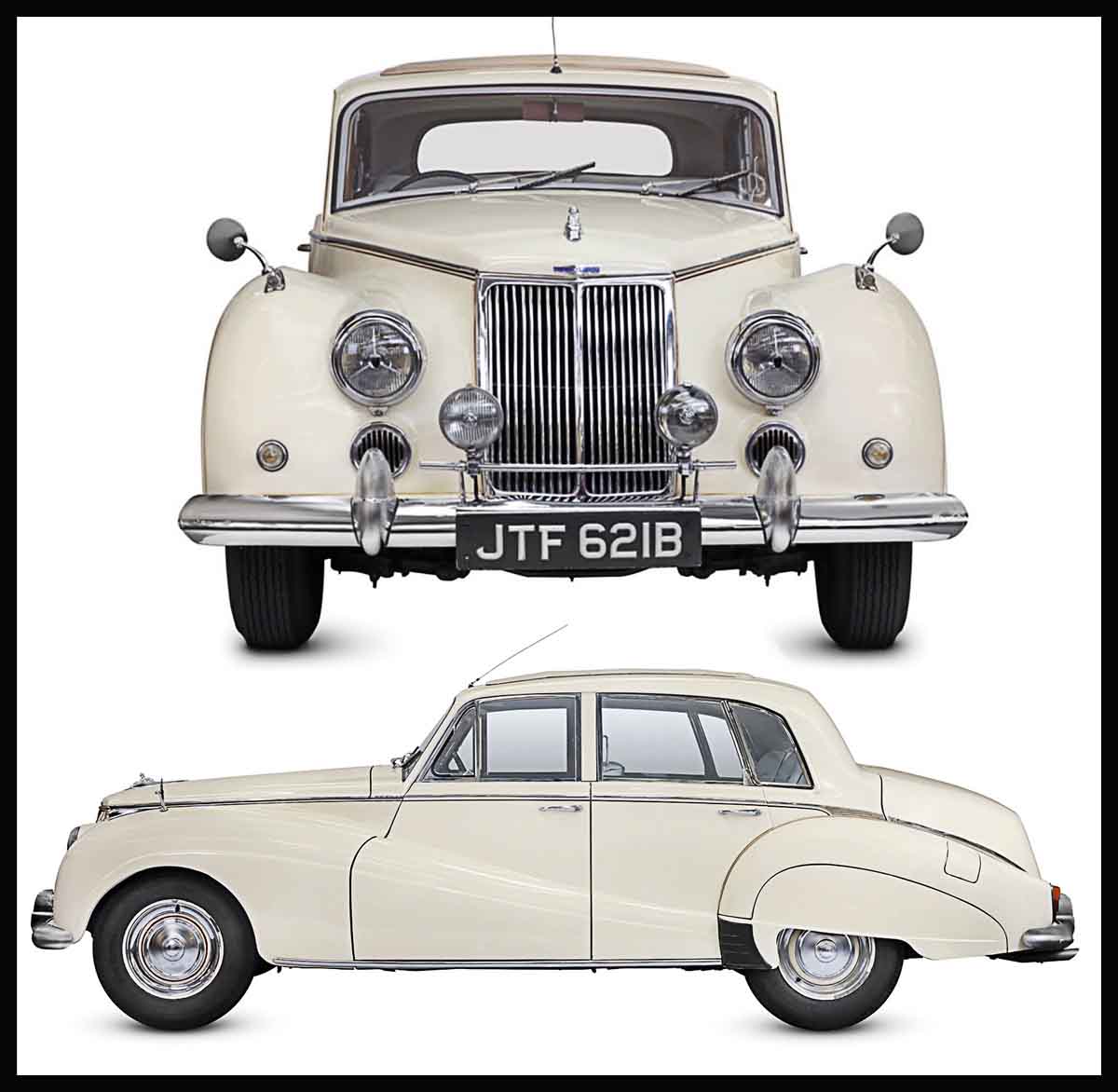
Charismatic Saloons
Cars such as big Opels and Vauxhalls appealed to up-and-coming consumers, who were trading up from economy-minded small saloons, but there was also a breed of large car aimed at a wealthier clientele. Just as today’s Mercedes, Jaguar, and BMW models are considered a cut above mass-market cars, so too did makes such as Armstrong Siddeley and Lancia bring a certain cachet to their owners. The way many of these cars were engineered and handled was often very different. Some set store by quality construction and straightforward engineering, others found favor because of their poise and technical flair, but all of them were cars people aspired to own.
Armstrong Siddeley Sapphire 346, 1953
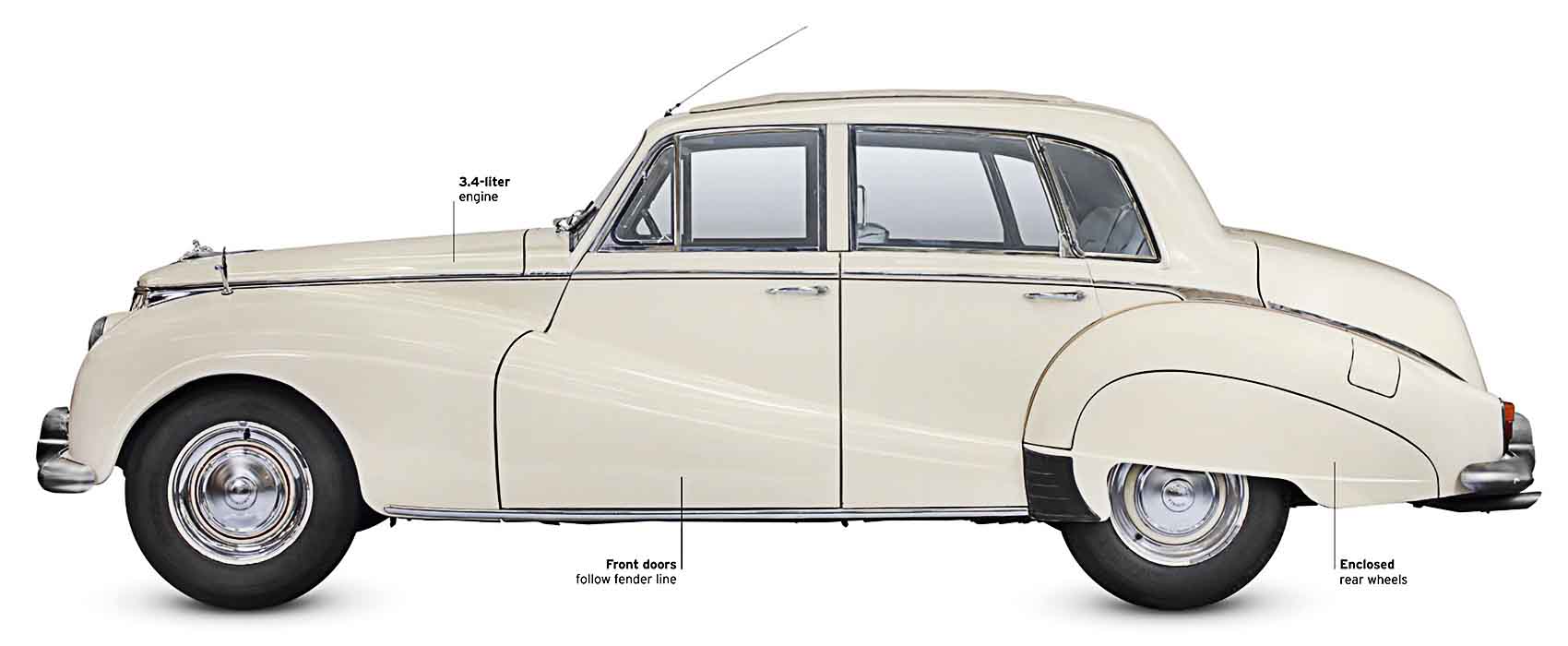
| Origin | UK |
| Engine | 3,435 cc, straight-six |
| Top speed | 100 mph (161 km/h) |
Along with Rover, Armstrong Siddeley made the sort of solid, tasteful, quietly luxurious cars that British doctors and bank managers sought to own. With its distinctive sphinx bonnet mascot, the Sapphire came with electric pre-selector or automatic transmissions. This was to become Armstrong Siddeley’s final model
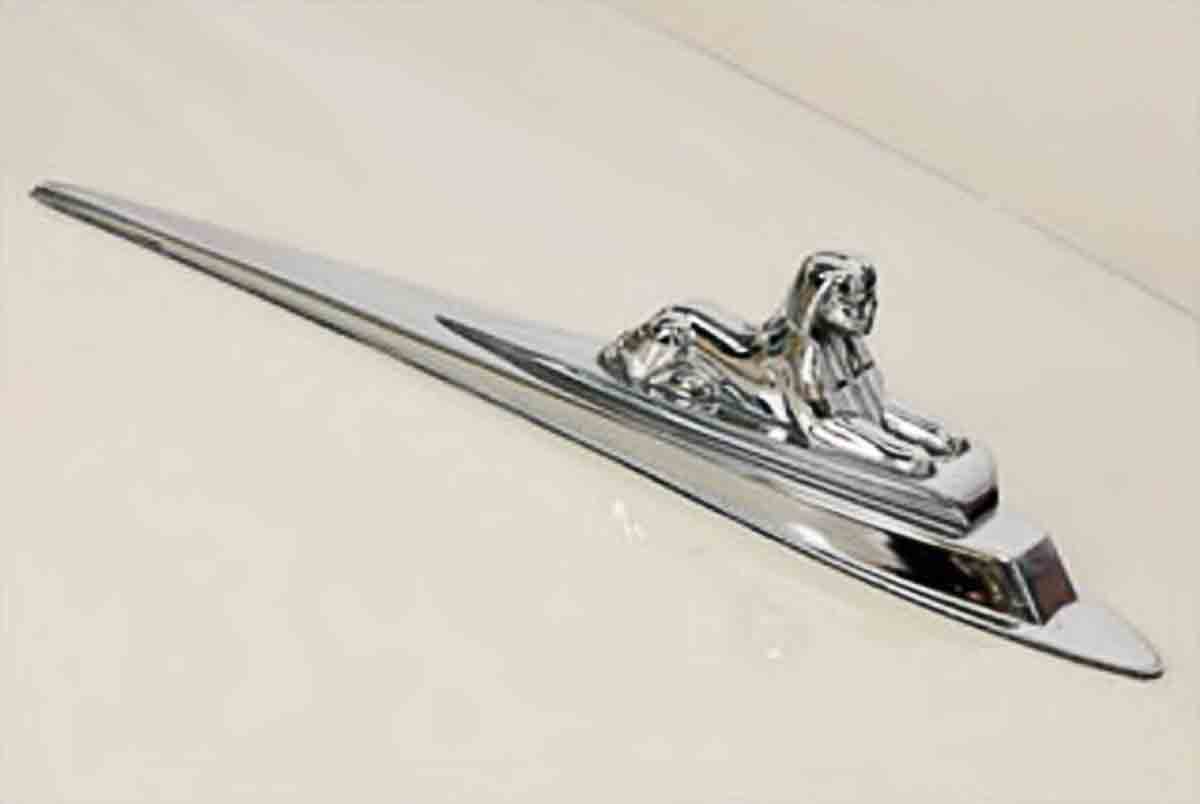
Sphinx bonnet mascot
Although in the 1950s Armstrong Siddeley made cars that exuded a discreet English good taste that was far from showy, its distinctive sphinx bonnet mascot was a small piece of chrome-plated Art Deco decadence.
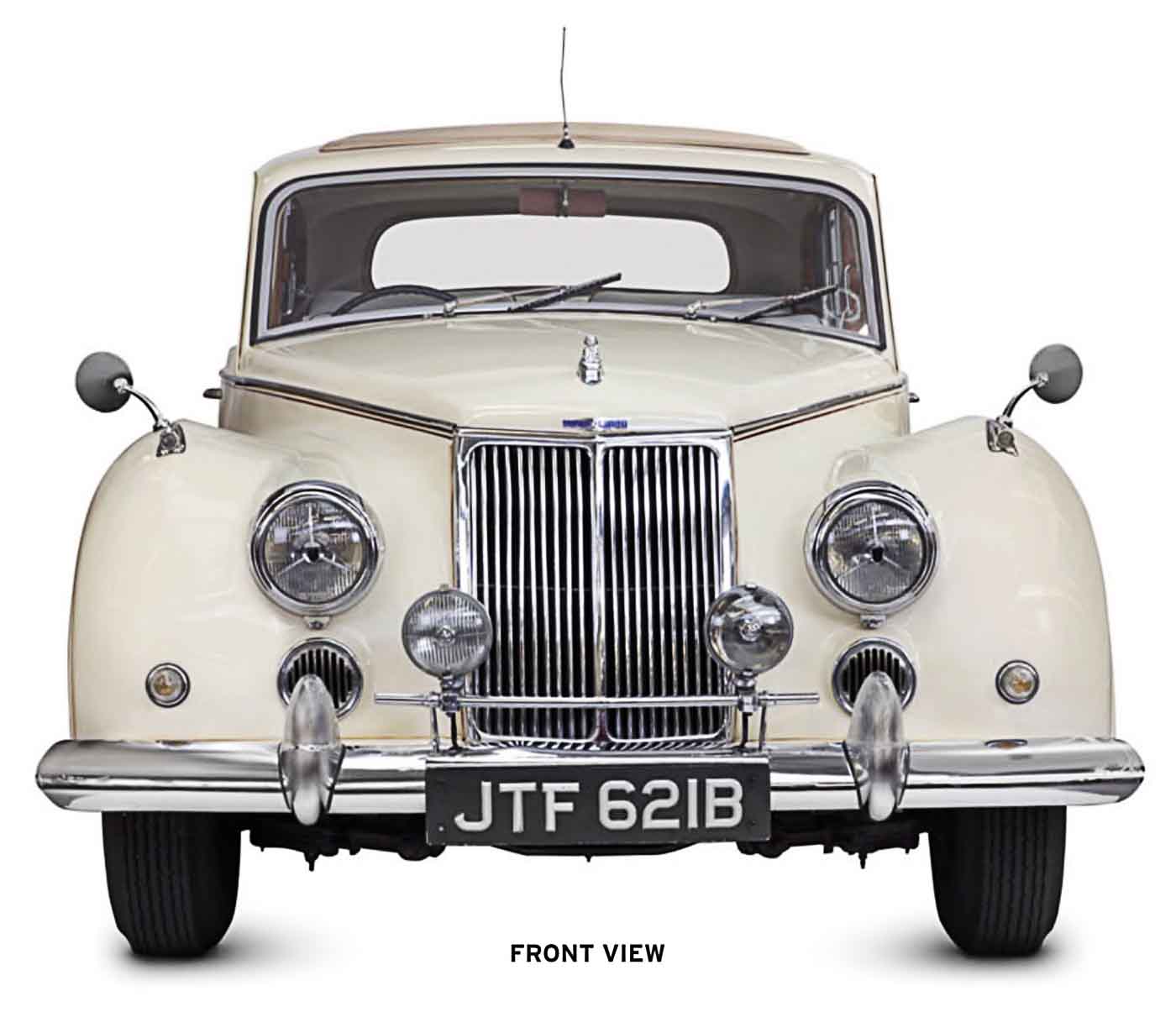
Aspirational vehicles
The Sapphire was built in an era when many families couldn’t afford a car, and those who could managed with something old and second-hand. Along with the likes of Jaguar and Rover, Armstrong Siddeley made the sort of vehicles that most people could only dream of owning.
Riley RME, 1952
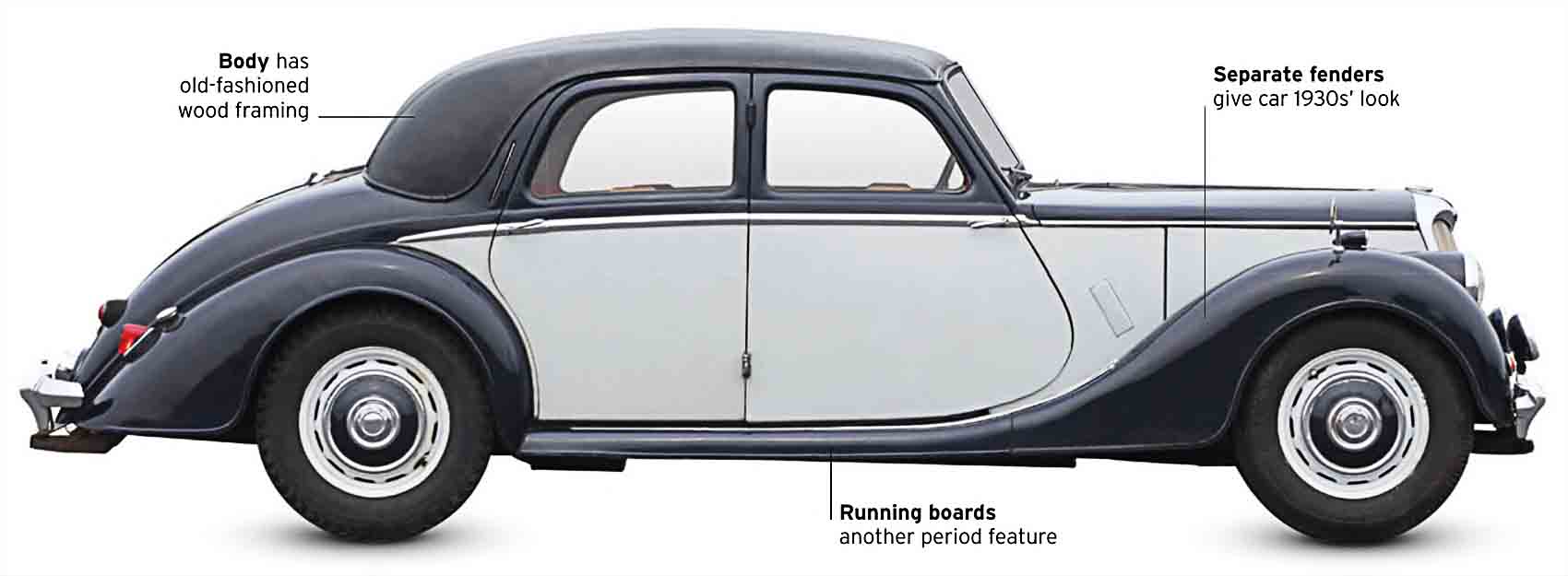
| Origin | UK |
| Engine | 1,496 cc, straight-four |
| Top speed | 78 mph (126 km/h) |
The Riley RME was a traditionally handsome car whose split windscreen and separate wings gave it an old-fashioned look. This extended to the way it was built, with a separate chassis and wood-framed body, but its mix of quality and sporting handling won it many friends.
MG Magnette ZA, 1954
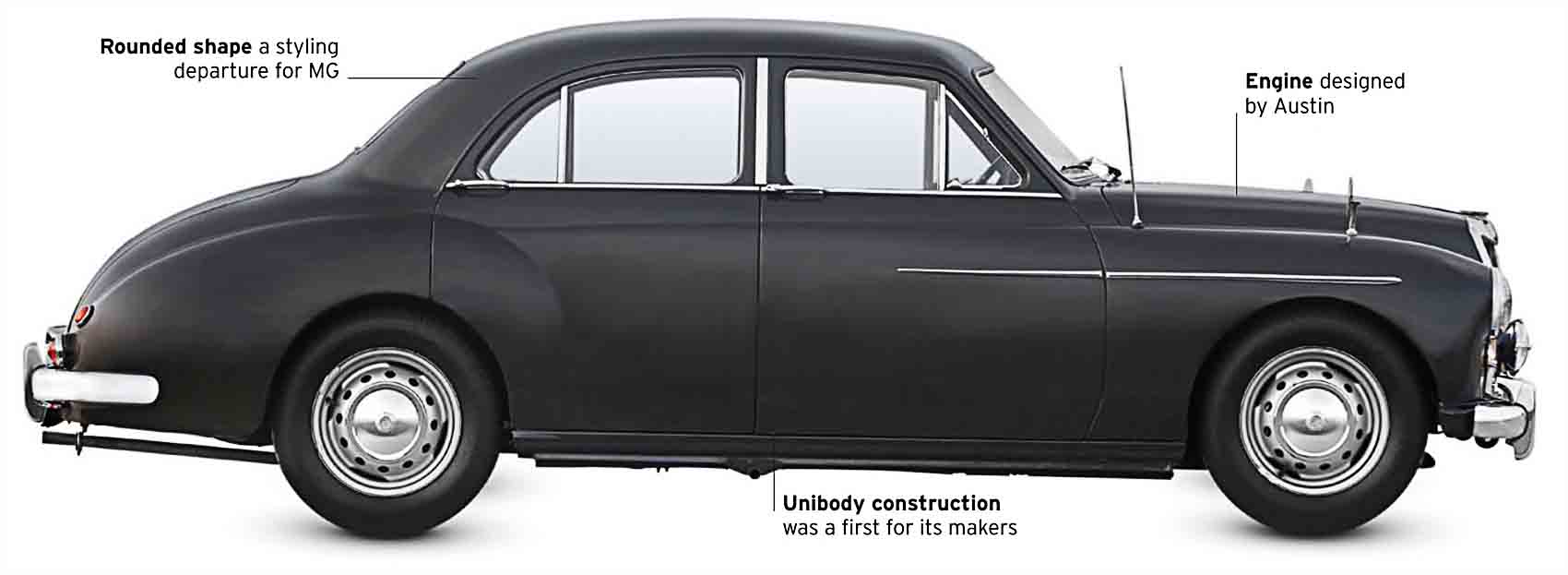
| Origin | UK |
| Engine | 1,489 cc, straight-four |
| Top speed | 80 mph (129 km/h) |
This handsome car was an example of “badge engineering.” Built by the British Motor Corporation, its body was shared with the Wolseley 4/44 and its engine came from Austin. With twin carburetors and rack-and-pinion steering, the MG was a pleasure to drive with a stylish wood and leather interior.
Tatra 603, 1956
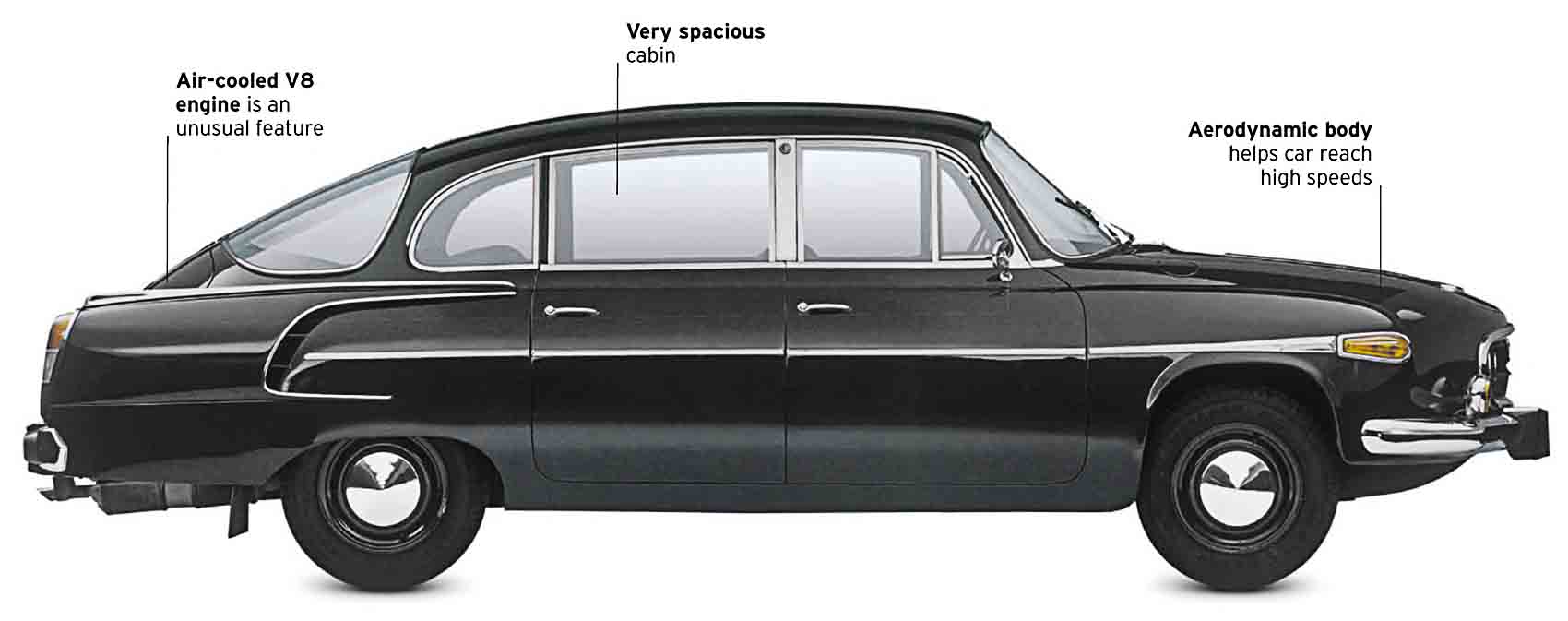
| Origin | Czechoslovakia |
| Engine | 2,474-2,545 cc, V8 |
| Top speed | 100 mph (161 km/h) |
Czech car-maker Tatra began making advanced, high-performance saloons in the 1930s. These had wind cheating bodies and rear engines, and this theme was continued with the 603, which mostly found favor with Czech diplomats. This well-made, aerodynamic car had a light, strong, air-cooled rear V8 engine and sometimes exciting handling as a result.
Lancia Flaminia, 1957
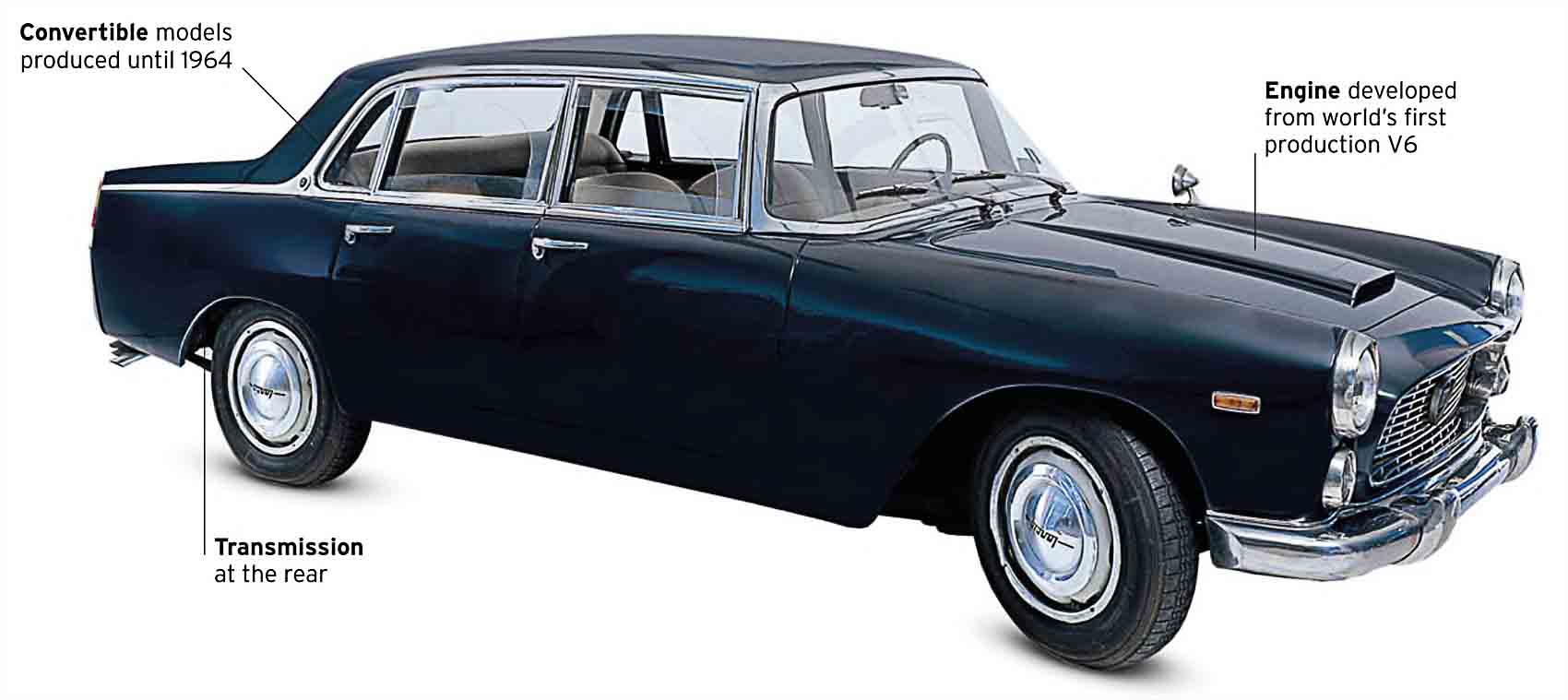
| Origin | Italy |
| Engine | 2,458 cc, V6 |
| Top speed | 102 mph (164 km/h) |
The big, square Flaminia was styled by Italian vehicle designer Pininfarina, which used similar visual ideas on other models, including the Austin Westminster. However, unlike the British car, the Lancia, with its de Dion transaxle was technically advanced and great to drive.
It is a quote. The Classic Car Book – The Definitive Visual History 2016




